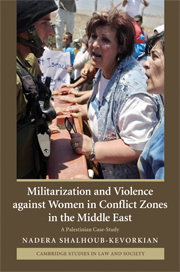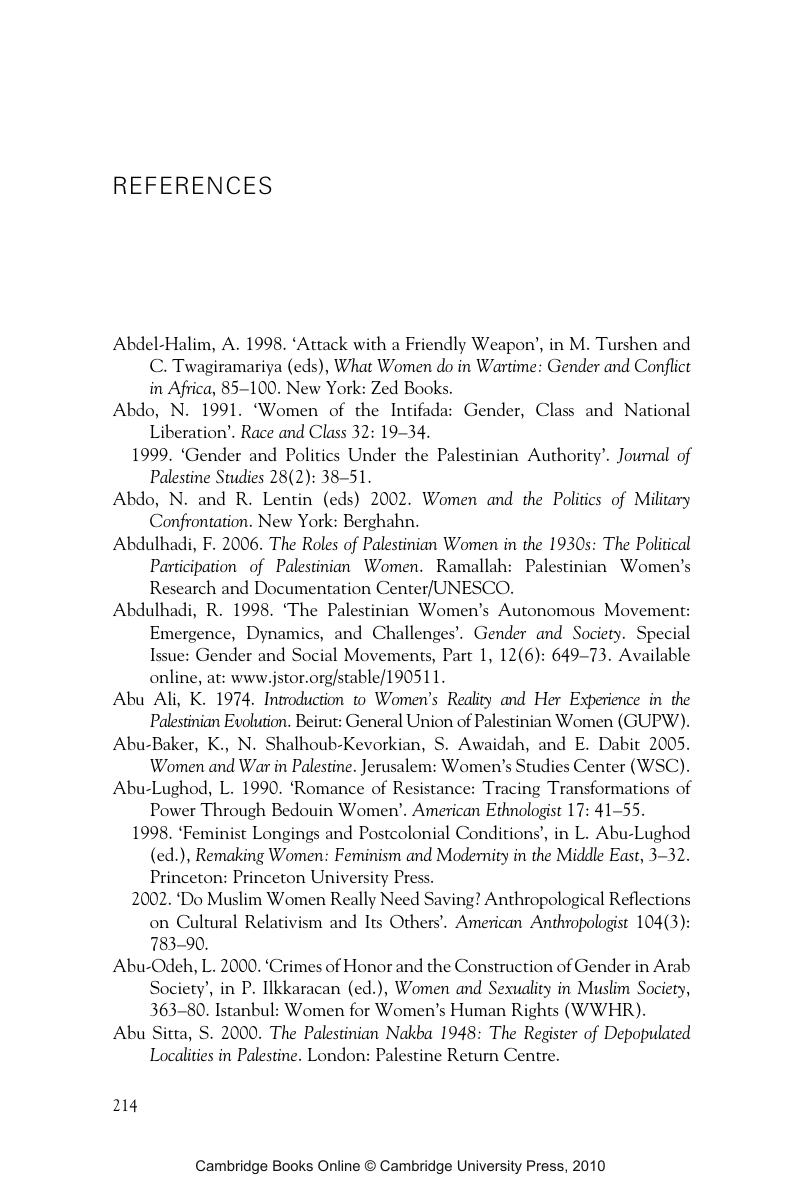 Militarization and Violence against Women in Conflict Zones in the Middle East
Militarization and Violence against Women in Conflict Zones in the Middle East Book contents
- Frontmatter
- Contents
- List of figures
- Acknowledgements
- 1 Introduction
- 2 Violent translations: women, war, and narrative in conflict zones
- 3 Veiled powers: conceptualizing woman and/as the ‘nation’
- 4 Women frontliners in conflict zones: a genealogy of weaponization
- 5 Speaking truth to power: voices of Palestinian women facing the Wall
- 6 Ruminations and final thoughts: women in-between
- References
- Index
- References
References
Published online by Cambridge University Press: 23 January 2010
- Frontmatter
- Contents
- List of figures
- Acknowledgements
- 1 Introduction
- 2 Violent translations: women, war, and narrative in conflict zones
- 3 Veiled powers: conceptualizing woman and/as the ‘nation’
- 4 Women frontliners in conflict zones: a genealogy of weaponization
- 5 Speaking truth to power: voices of Palestinian women facing the Wall
- 6 Ruminations and final thoughts: women in-between
- References
- Index
- References
Summary

- Type
- Chapter
- Information
- Militarization and Violence against Women in Conflict Zones in the Middle EastA Palestinian Case-Study, pp. 214 - 226Publisher: Cambridge University PressPrint publication year: 2009


